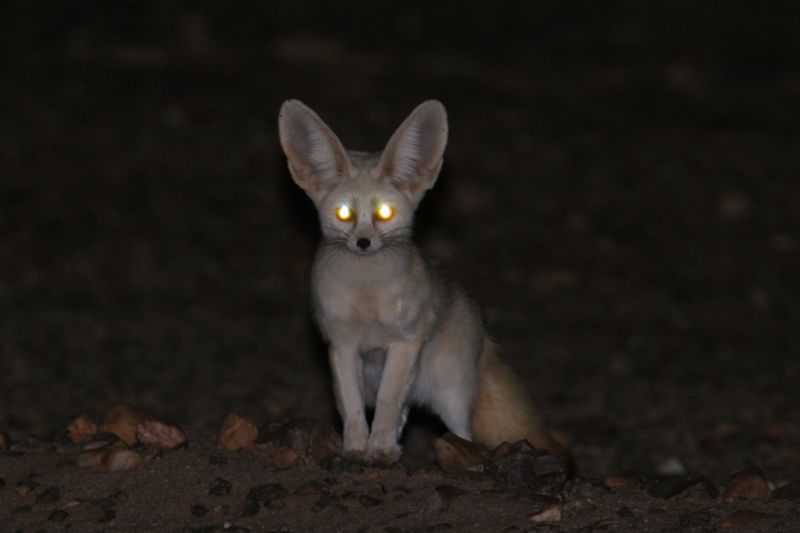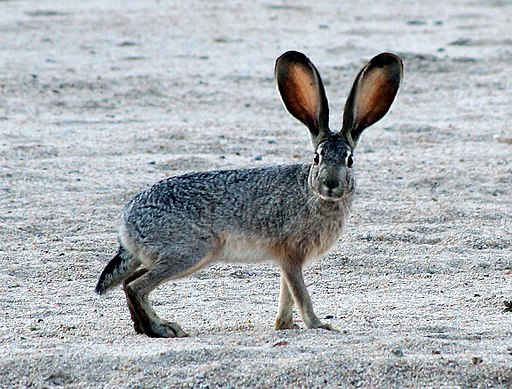Species Biology
Species biology is reflected in the species’ life strategies: how it allocates energy and materials to compete for survival and reproduction. Life strategies evolve via natural selection and reflect the trade-offs among growth, survival, and reproduction. A species’ life strategies are a sum of its morphology; physiology; environmental responses; resource requirements; energy acquisition, storage, and allocation; reproduction strategy; and life cycle. In this textbook, we focus on the specific aspects of species biology that relate to the environmental stresses of aridity and heat.
Section 1: Plants
Photosynthesis
Photosynthesis is the foundational process of the food chain. Through photosynthesis, plants are powered by solar radiation to convert water and carbon dioxide (CO2) into carbohydrates that provide energy for the plant and for organisms throughout the food chain. This textbook assumes you are familiar with the general process of photosynthesis, so we will focus here on the three photosynthetic pathways—C3, C4, and CAM—and how they relate to plant species’ ability to survive and thrive in arid environments.
C3 Plants
The photosynthetic product of C3 plants is a 3-carbonic acid (hence the name). C3 plants have a one-step carbon fixation process in which rubisco fixes CO2 directly in chloroplasts. Although with adequate moisture and high concentrations of CO2 these plants can maximize growth efficiency, the C3 pathway can be inhibited by oxygen, which reduces efficiency.
C3 plants are referred to as cool-season plants because the optimum ambient and soil temperature range for function and growth is 65–75°F and 40–45°F, respectively. As the ambient temperature increases beyond the optimum range, the plant becomes less efficient. The annual growth cycle of C3 plants, therefore, is generally most efficient in fall and spring, and C3 plants experience reduced production capacity in warm, dry climates.
C4 Plants

The photosynthetic product of C4 plants is a 4-carbonic acid, giving it its name. C4 plants have the advantage of flexibility within the photosynthetic process. Depending on the oxygen and carbon dioxide concentration in the palisade mesophyll, C4 plants can perform either the one-step photosynthetic process of C3 plants or a two-step photosynthetic process that is not inhibited by oxygen. The two-step photosynthetic process is not as energy efficient, however, as it requires a molecule of ATP. The video linked here from BOGO Biology explains clearly the differences in photosynthetic pathways.
C4 plants are referred to as warm-season plants because their optimum ambient and soil temperature range for function and growth is 90–95°F and 60–65°F, respectively. These plants are generally affected by ambient temperature increases beyond their optimum range, and they require less water for biomass production; C4 plants’ geographic distribution is thus generally within the lower latitudes that encompass tropical and desert areas.
CAM Plants
CAM (crassulacean acid metabolism) is a diurnal photosynthetic process adapted to conserve water in hot and arid environments where evapotranspiration is high. During the nighttime process, the stomata open and CO2 can enter the plant. Since there is no solar radiation during this nighttime process, however, CAM plants begin the photosynthetic process just like C4 plants do, using PEP (phosphoenolpyruvate) and CO2 to produce malate. Then, during the daytime process when solar radiation is available and the stomata are closed, the photosynthetic process continues very much as it does in the bundle sheaths of C4 plants.
Plant Adaptations to Drought and Heat
Plants in arid environments have mechanisms to avoid, tolerate, or resist the environmental stress (low precipitation, high temperatures, heavy winds, and high salinity) of arid and semiarid environments.
Avoidance
A basic avoidance strategy for some plants, particularly annuals, is to simply not grow until there is sufficient water (~25 mm of rainfall) available for growth and reproduction. These plant species are generally small and shallow-rooted. These types of species require not only precipitation but also specific thresholds of temperatures (25–30°C for summer annuals; 15–18°C for winter annuals) coincide with the precipitation. When these plants do germinate and grow, they generally have large leaves for maximum photosynthesis so growth and reproduction can take place quickly over a short period of time.
Tolerance
Plants that are tolerant of heat and drought evade or endure ill effects by leveraging one or more strategies: (1) they demonstrate leaf polymorphism or leaf features that reduce transpiration and photosynthesis; (2) they use stem photosynthesis; and/or (3) they are phreatophytes.

Leaf polymorphism allows a plant to develop a set of large leaves to maximize photosynthesis in early spring but then to drop those leaves and develop a second, smaller set at the onset of the dry period. Brittlebush (Encelia farinosa) is an example of a plant that leverages leaf polymorphism. Some plants, such as creosote bush (Larrea tridentata), not only use leaf polymorphism but also develop a resin that helps reduce transpiration and photosynthesis. Other plants, such as bursage (Ambrosia dumosa), employ leaf polymorphism and pubescence (small hairs) to reduce photosynthetic rates, transpiration rates, and surface heating.
Stem photosynthesis greatly reduces transpiration rates because the stem is vertical rather than horizontal like leaves, and so it receives less surface heat. In addition, stems generally have thicker epidermis and/or waxy coatings. In conditions of high aridity and water stress, these plants are able to both maintain photosynthesis and conserve water. Some plants, such as white burrobrush (Hymenoclea salsola), trade off leaf photosynthesis for stem photosynthesis when under water stress, while other plants, such as Mormon tea (Ephedra viridis), are leafless and rely solely on stem photosynthesis.

Phreatophytes, which include plants such as mesquite (Prosopis glandulosa), have root systems that can reach the water table several meters down. They may also have lateral surface root systems that can take advantage of water from passing precipitation events before it infiltrates what are usually sandy-clayey soils.
Resistance
Succulents have evolved to resist and thrive in aridity and drought. Like some phreatophytes, succulents are shallow rooted to take advantage of precipitation events. Waxy coatings on their thick, fleshy leaves or stems help reduce transpiration, allowing the plants to withstand high temperatures that would wilt nonsucculents.

Many succulent species are also CAM plants, which close stomata during daylight hours when temperatures are highest to reduce water loss and conserve energy. The trade-off for succulents’ ability to resist and thrive in aridity and drought is reduced photosynthesis and concomitantly reduced growth rates.
Cacti are a category of succulent with additional adaptations to heat and aridity—spines rather than leaves. Compared to most plants’ flat, broad leaves, spines have a considerably higher surface-to-volume ratio and hence dissipate heat at a much faster and higher rate. Spines also shade areas below them, reducing the plant’s heat stress.
Seeds in Wildland

Before plants can employ survival strategies, their seeds must be available in a seedbed appropriate for germination. As a protein-packed food source, many seeds are lost to small mammal predation. Wind can drive seeds across open spaces until they accumulate in areas where they are protected from further wind dispersal, such as at the base of a larger plant. These factors, which can either reduce species densities or foster development of cluster plant communities, are part of the reason plant species are not more uniformly distributed across a landscape.
Soil Biotic Crusts

In many arid and semiarid areas, soil biotic crusts form clusters of bacterial, algae, moss, and lichen growth in the top few millimeters of soil. These crusts thrive under the stresses of arid and semiarid climates as they are generally resistant to heat, require low amounts of water, and have the capacity to fixate their own nitrogen. Soil biotic crusts serve many functions, including soil stability and erosion mitigation, facilitation of water infiltration and nitrogen fixation, and provision of nutrients and safe sites for seed germination. Have you ever been hiking in the Southwest and seen signs reading, “Stay on the Trail”? These signs usually indicate an effort to protect soil biotic crusts, which are highly vulnerable to disturbance and slow to recover.
Section 2: Animals
Behavioral Adaptations to Drought and Heat

The primary strategy used by birds and mammals living in dry, hot environments is simply avoidance. Many animals in arid and semiarid environments are nocturnal (active only at night), such as the javelina (Tayassu tajacu), or crepuscular (active only at dawn and dusk), such as the coyote (Canis latrans). During the heat of the day, many species seek the cooler microclimates of burrows, crevices between rocks, north-facing areas, or plant shadows. Larger mammals have the advantage of thermal inertia (a larger body size takes longer to heat up); however, at midday, they too take shelter in cooler microclimates. Some species, such as the desert woodrat (Neotoma lepida), aptly called the “pack rat,” create their own elaborate tunneled microclimate by building a den from plant litter.
Morphological and Physiological Adaptations to Drought and Heat
In addition to avoidance, some species have morphological and physiological adaptations to aridity and drought. These adaptations fall into three categories: heat dissipation; evaporative cooling; and alternate water acquisition.
Heat Dissipation

Likely the most commonly known adaptation to heat is seasonal shedding of fur or hair to reduce insulation and allow the body to dissipate heat more readily. Species such as the jackrabbit (Lepus californicus) have long, tall ears containing dilating blood vessels that facilitate the dissipation of body heat into the air.
Evaporative Cooling
Water evaporating from the surface of an animal has a cooling effect—that’s why dogs pant. As saliva in the mouth evaporates, it cools the surfaces of the mouth and throat and the blood vessels just below these surfaces, circulating cooled blood throughout the body. Evaporative cooling in the nasal passages works in a similar way, providing cooling to the brain. Vultures (Cathartes aura) take evaporative cooling to another level by urinating on their leg. The urine evaporates into the air, drawing heat from the bird’s body along with it.
Alternate Water Acquisition
Water is vital for life. In arid and semiarid environments, species need a physiological system to balance internal water availability and water use, particularly when faced with limited free water. Species may obtain water through the food they eat. Pronghorn (Antilocapra Americana) are well known for obtaining nutrients and water from cholla fruits. Pronghorn, like other large mammals, correlate their ranges to free water sources, while some species, such as the kangaroo rat (Dipodomys deserti), employ multiple methods to obtain and use water efficiently. Kangaroo rats obtain oxidized water from metabolized seeds, particularly those stored in high-humidity burrows; they also produce concentrated urea and very dry feces, both of which allow the animal to retain more water in the body.
Conclusion
Species biology reflects a species’ life strategies—the niche they occupy and how they survive and thrive. Plants and animals in the arid and semiarid environments of deserts, shrublands, and woodland savannas have an array of adaptations that allow them to avoid, tolerate, or resist heat and drought. The next chapter will further our understanding of species in relation to their environment by developing an understanding of the growth and distribution of populations of species.

